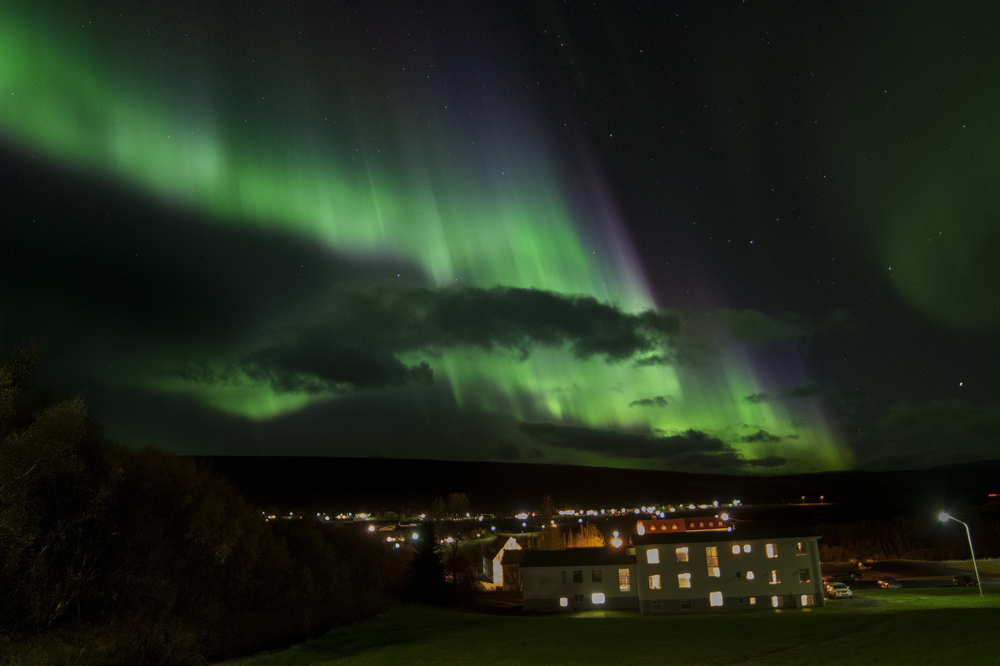Top Stops
The places you must check out during your stay!
There are so many things to see and do in Mývatn. Here are the top locations we recommend you visit while you are in the area. Tag #VisitMyvatn
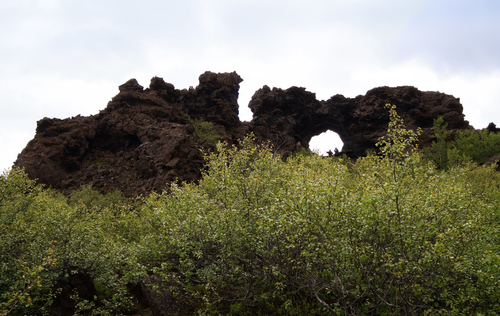 Dimmuborgir
Dimmuborgir
The Dark Fortress at Mývatn is a true wonder of nature and nowhere else to be seen in the world, i.e on dry land. Dimmuborgir consist of huge lava rock formations which make you feel like you stepped into another world - a world of fairy-tales. The formation of these extraordinary lava cliffs and pillars is caused by lava ponds, i.e. the hot lava streamed over these ponds trapping the water underneath the lava. Steam issued through vent in the lava pools and formed these pillars, which then remained standing even after the crust around them had gone away.
The rocks are brittle and fragile because of how they came to be made, so there is no climbing in them.
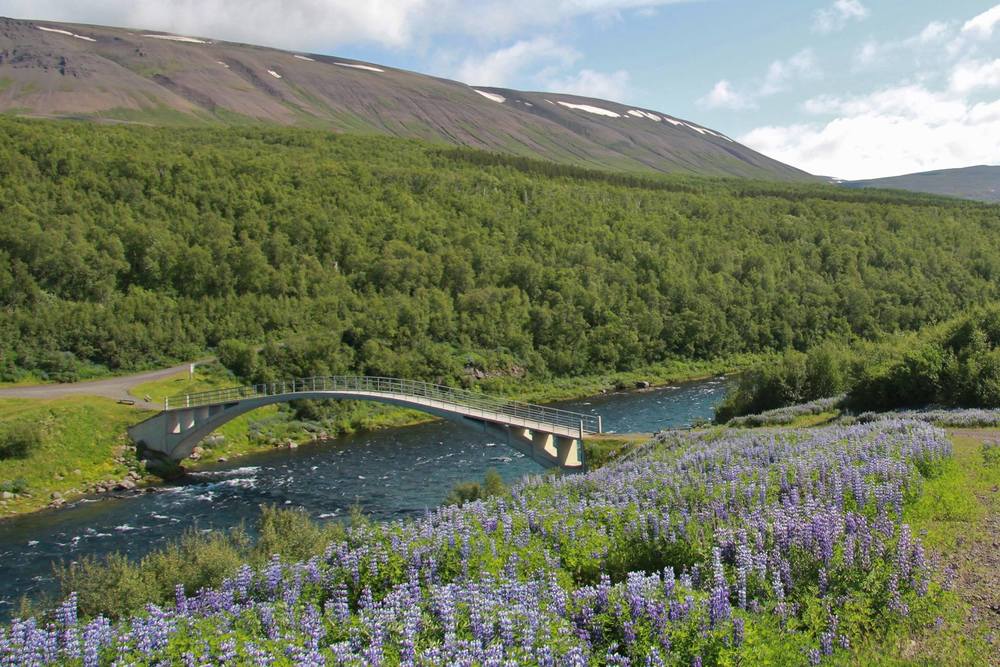
Vaglaskógur
Vaglaskógur forest is the country's largest birch forest and a popular destination for Icelanders. It is one of the most beautiful forests in Iceland. Due to strategic conservation for over a century, the birch trees in Vaglaskógur forest have distinctive characteristics. At the northern perimeter of the forest, you will find a stone arched bridge. Built in 1908, it was the first of its kind in Iceland. Quite ambitiously, it was the longest stone arch bridge in Scandinavia at the time, 55 meters long. It is still used as a footbridge and a must to walk over it if you are in the area!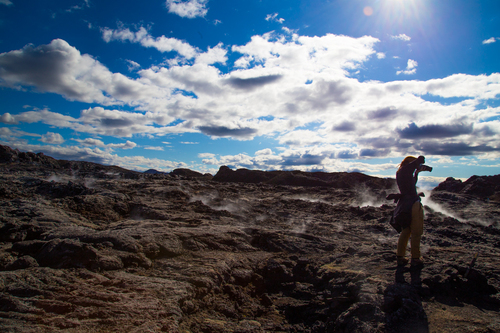 Krafla Caldera
Krafla Caldera
The Krafla Caldera is a 10km long, 2km deep, cauldron-like geological feature perched on the edge of the Eurasian and American tectonic plates. A collapsed, but still active volcanic area, in total there’s been 29 recorded eruptions, the most recent of which was the Krafla Fires in the 1970s.For tourists, there are three main highlights to the Krafla area. Leirbotn (the geothermal power station), Víti Maar (a volcanic crater with an opaque, teal green lake) and Leirhnjúkur (steaming sulphuric terrain and multicoloured lava field landscapes).
Leirhnjúkur Lava Fields - "With steaming sulphuric terrain and craggy, lava field landscapes, this is truly one of the must-see gems of the Mývatn area, according to Visit Húsavík". This is a nice place to walk around to experience this still warm beautiful lava. The area that inhabits the magma is very colorful, full of moss and lichen painted with sulphur and rhyolite. This is an active volcanic area with beautiful formations and an extraordinary view. We recommend to everyone to take the time and visit Leirhnjúkur Lava Fields.
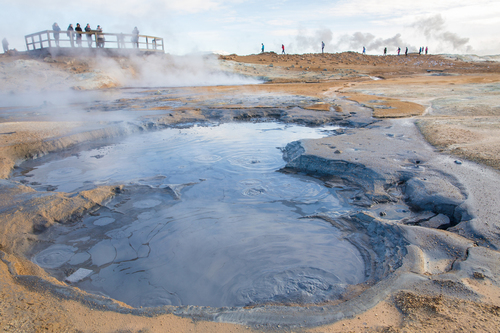
Hverir
Hidden from the view, if you’re driving east from Mývatn, behind Námaskarð is a large geothermal field of Hverir that is a unique wasteland where boiling mud, hot springs and hissing chimneys give life to a desolate Mars-like scenery. It is a high-temperature geothermal area with fumaroles and mud pots that bubble to a temperature of over 200 degrees Celsius. According to many, the Hverir Geothermal Field is one of the most spectacular (and overlooked) places in all of Iceland.
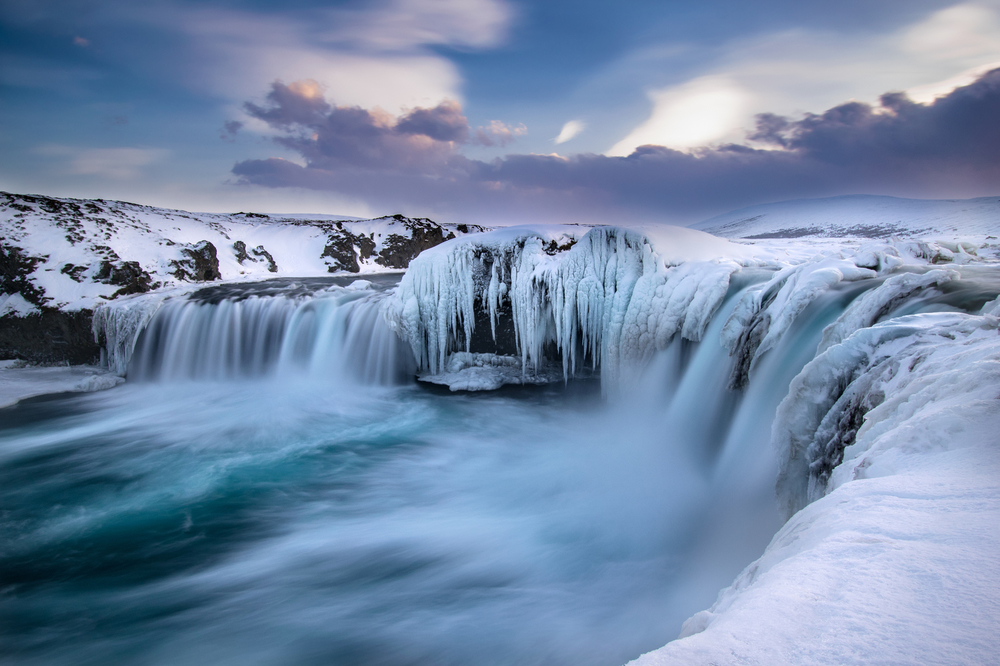
Goðafoss
Goðafoss waterfall is one of the most spectacular waterfalls in Iceland. The water of the river Skjálfandafljót falls from a height of 12 meters over a width of 30 meters. In the year 1000, the Lawspeaker Þorgeir Ljósvetningagoði made Christianity the official religion of Iceland. After his conversion, Þorgeir threw his statues of the Norse gods into the waterfall hence the name Goða-foss; the waterfall of the gods.
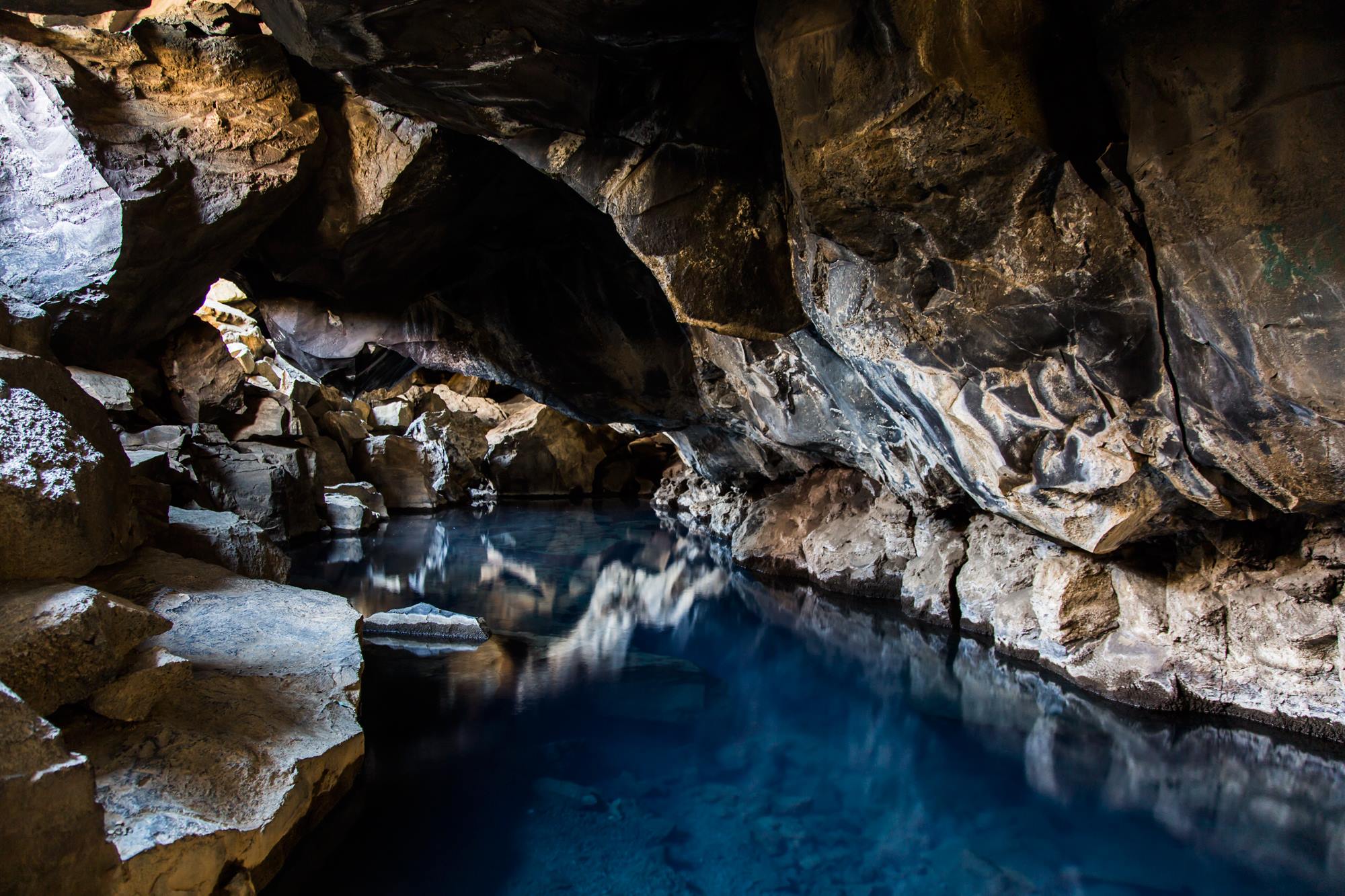
Grjótagjá
Grjótagjá is a small cave in the Mývatn area, and was a popular bathing place for the locals some decades ago. However, geological activity in the period 1975-1984, caused the temperature of the water in the cave's pool to rise to such a degree that it has not been possible to bathe there since. But one can always dream ... a peep into the waters and a fertile imagination could conjure up visions of taking a dip in this cosy little cave, as was the custom in the past.
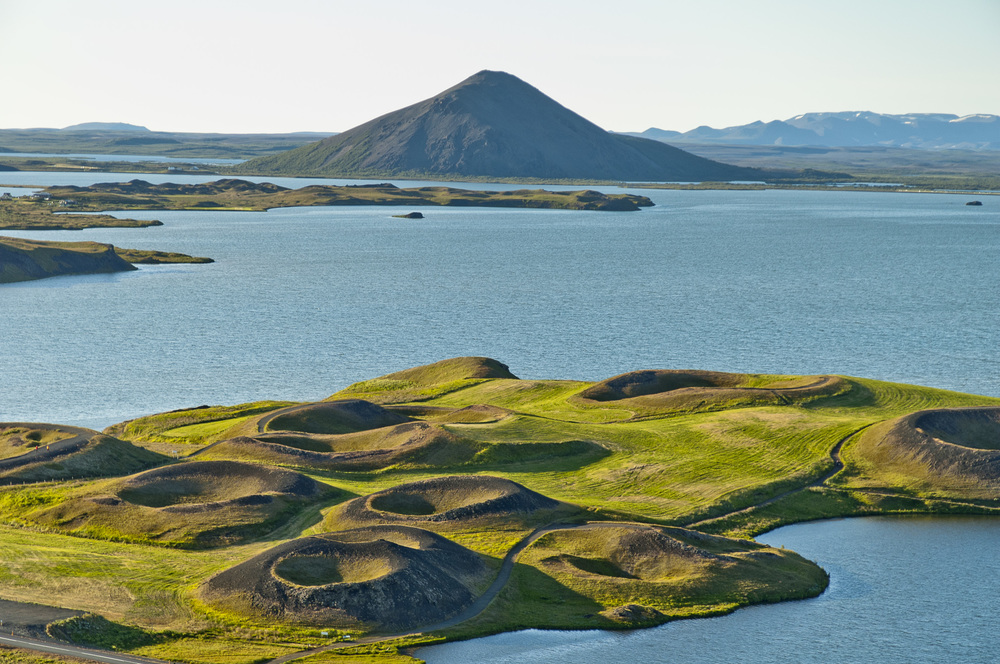
Skútustaðir Pseudocraters
Skútustaðagígar pseudo craters were formed by gas explosions when boiling lava flowed over the wetlands. The craters are a popular site for birdwatchers and are protected as a natural wetlands conservation area.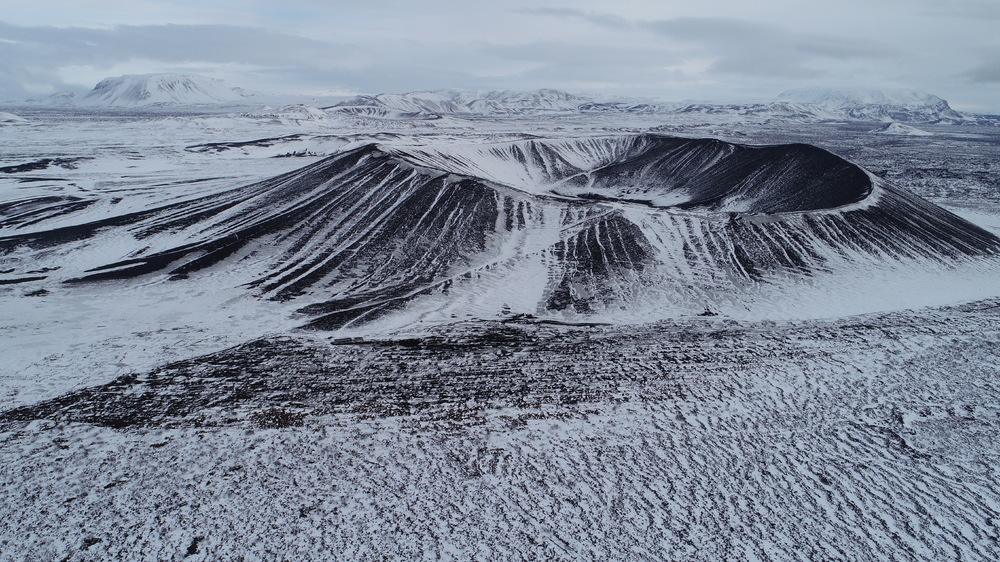
Hverfjall
Hverfjall has a large, circular explosion crater, about 140 metres deep and with a diameter of 1,000 metres. Hverfjall is one of Iceland's most beautiful and symmetrical explosion craters, besides being one of the largest of its kind in the world. It is considered certain that the crater was created during a volcanic explosion, and its age is estimated to be around 2800 - 2900 years.
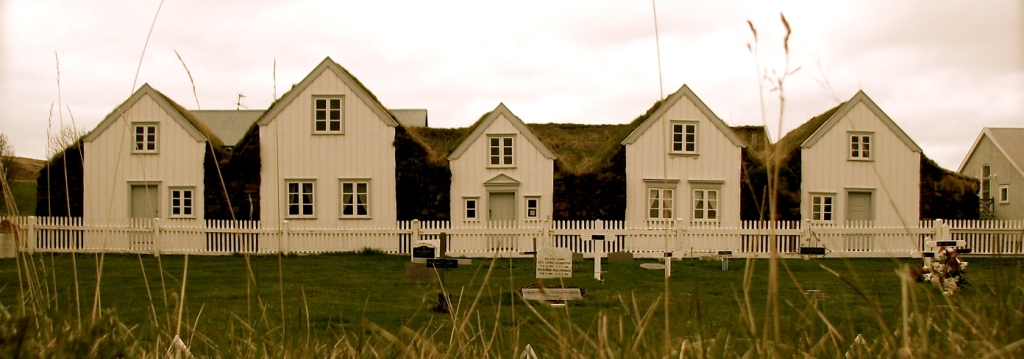
Grenjaðarstaður
It is the site of a church and also one of the most famous turf farms in Iceland. It was home to the chieftains of the past, and it is an enlightening experience to visit the farm and become acquainted with the lives of Iceland's rich and famous in days gone by.
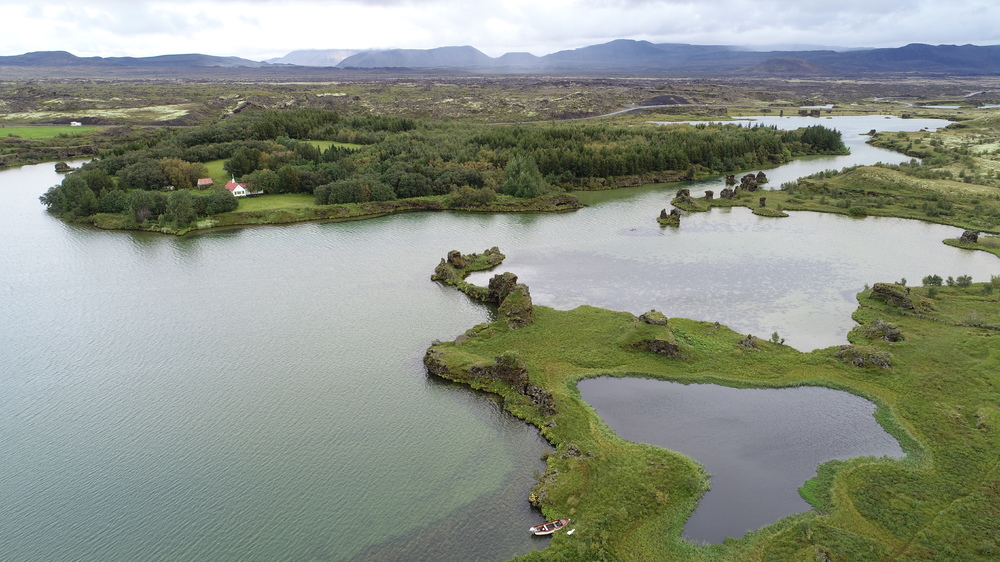
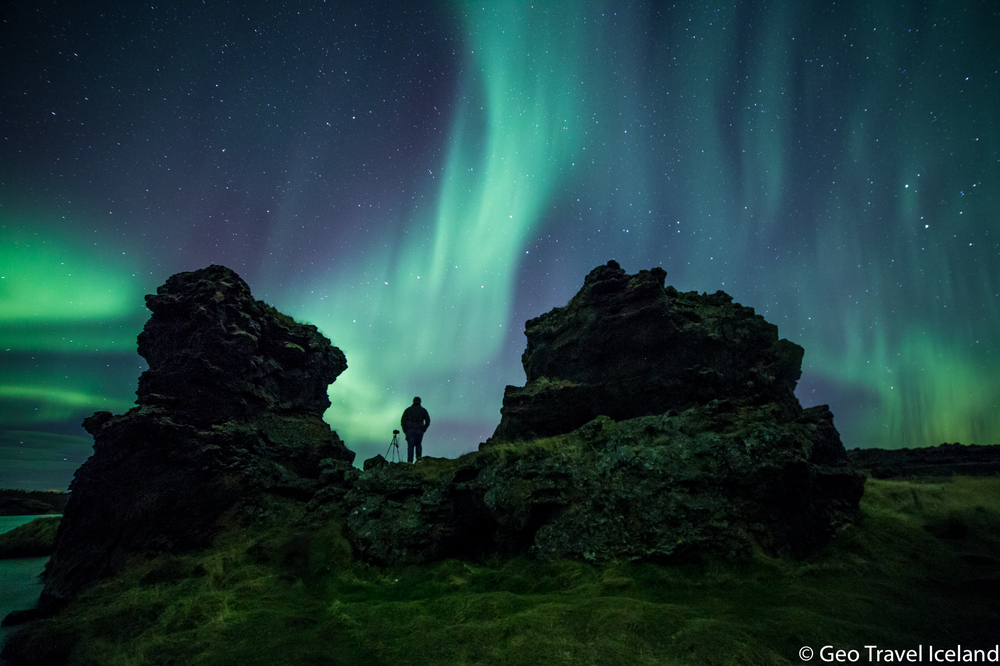
Höfði
Höfði is a rocky promontory which reaches into the waters of Lake Mývatn. The view from here is good, giving a vista of the lake's coves and inlets, besides being an excellent site for bird watching. Kálfastrandarvogur bay laps the shores of Höfði and is famous for its unusual lava formations both off and onshore, and these rocky outcrops, named Klasar and Kálfastrandarstrípar, have done much to earn Kálfastrandarvogur and Höfði their reputation for being among the most beautiful areas around Mývatn.
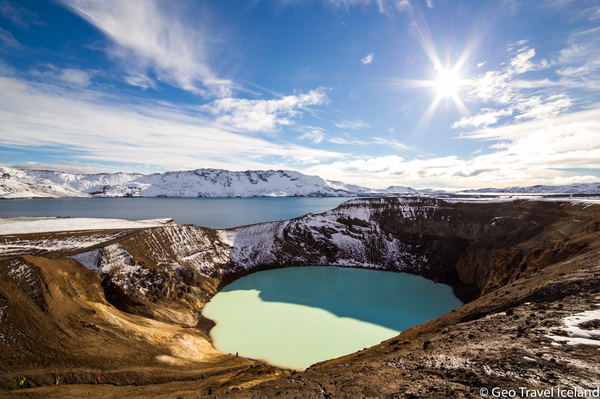
Askja
Askja is an enormous caldera and central volcano in the Dyngjufjöll mountains, north of Vatnajökull glacier. The caldera is a bedrock subsidence located above a massive magma chamber, and is still 'in the making'. Askja was not explored until the nineteenth century, but a series of eruptions in 1874-1875, especially a very powerful explosive eruption in March 1875, caught the attention of the local people as well as scientists. In the massive eruption in 1875, the volcano erupted approximately 2 billion cubic meters of ash and pumice, and a new caldera was formed inside the older one. In the following decades the new caldera was filled with water, and now contains the 11km² Lake Öskjuvatn, which is also one of the deepest lakes in Iceland (220m). The Askja volcano erupted a few times in the 1920s, but the latest eruption was in the autumn of 1961.

Aldeyjarfoss
Aldeyjarfoss waterfall is considered the most beautiful one in the river Skjalfandafljot. The waterfall is framed with long, natural basaltic columns. It is located in the uppermost regions of the Bárðardalur valley, on the Sprengisandur highland route. It is possible to drive almost all the way up to it. The photographers dream location!
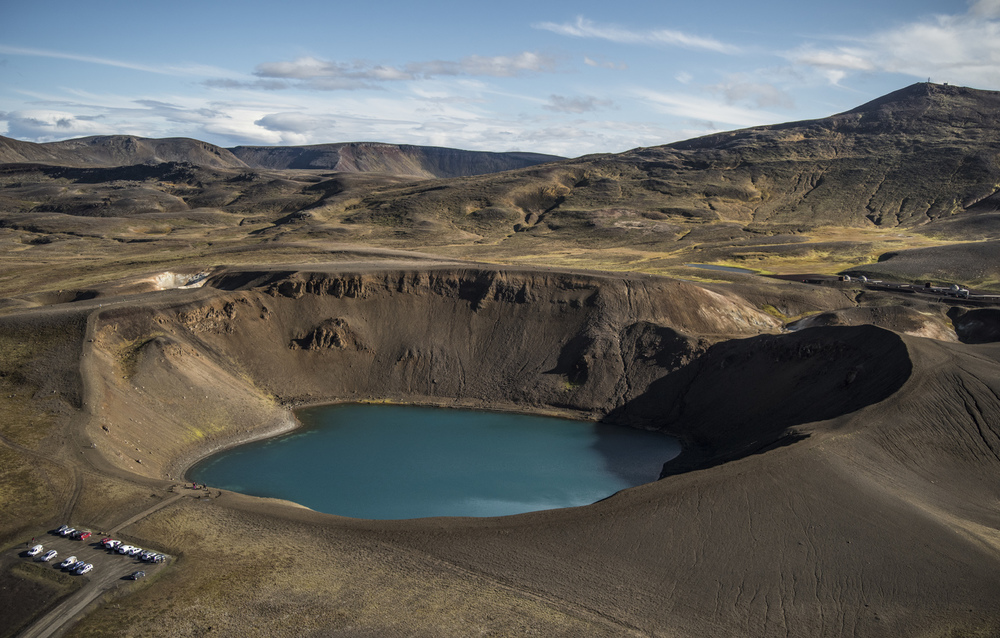
Stóra Víti
This is a maar (explosion crater) about 300 metres in diameter by Krafla mountain, which was formed during a massive volcanic eruption at the start of the famous Mývatn Fires in 1724. The eruption continued more or less non-stop for 5 years and Víti's bubbling cauldron of mud boiled for more than a century after that.
